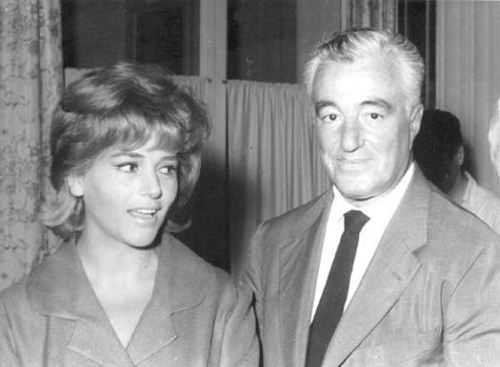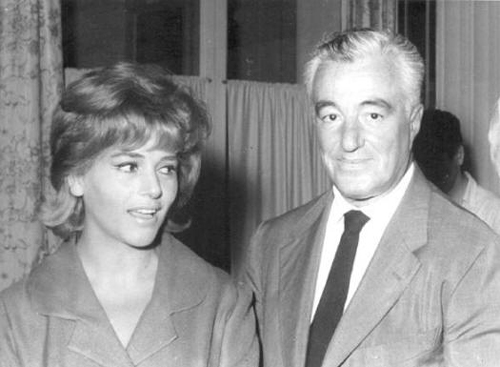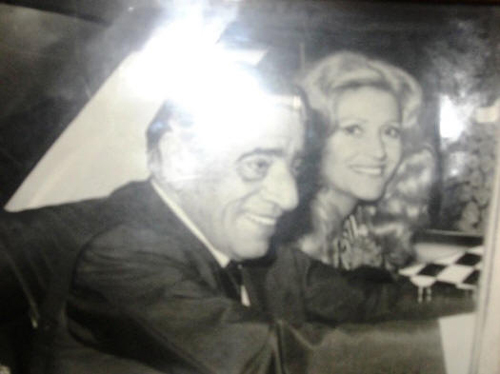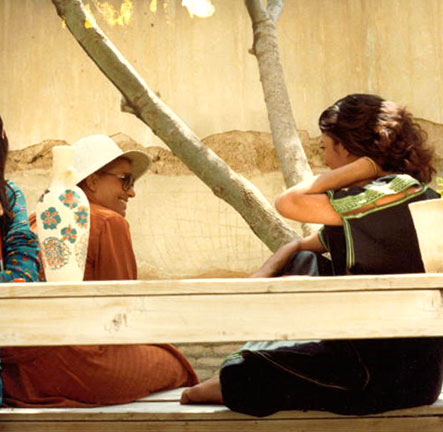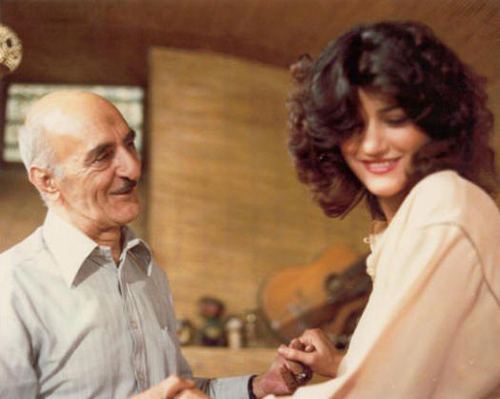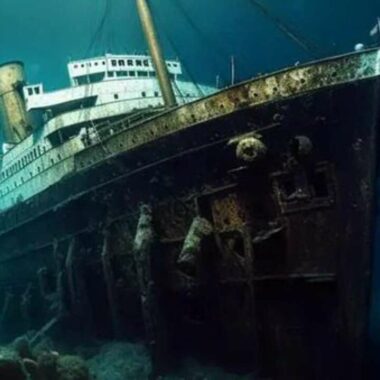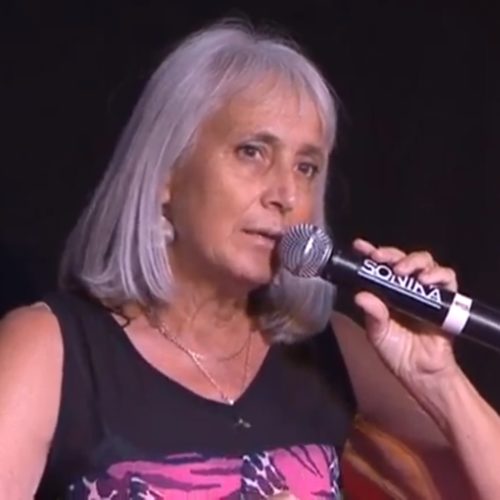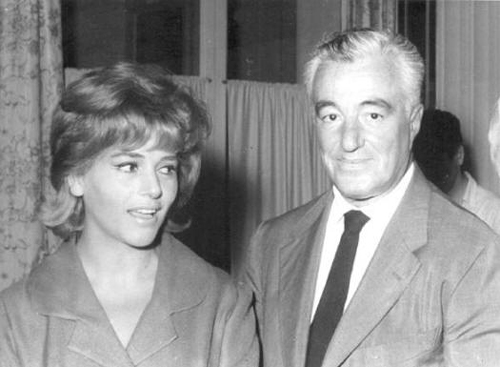Interview with filmmaker Parvin Ansary
Don’t miss part two of the interview with Parvin Ansary
I wrote this interview four years ago but it never really reached the right audience which is the women of all nationalities as there is no place on earth where women’s rights have not been violated or where women do not continue their struggle to gain economic and political parity with men. This interview gives some historic perspective to women’s issues, to women in cinema and film making and also a lot of information about the evolution of Iranian cinema during the Pahlavi regime and now as well as post war Italian cinema and now as well as Hollywood of the ’50’s and now. The issues it discusses are universal and timeless and so they will always be relevant today or a 100 years hence. Parvin Ansary is a woman who against the wishes of her family and the expectations of her culture and against a male dominated industry made it as a film director and producer in Italy as a foreign woman.
I have known Professor Parvin Ansary since I was in 6th grade in Rome all the way back to 1961 when I was 11 years old. In 1975 and ’76, I acted in two of the films she made in Iran. We have remained and continue to be friends all these years and in fact we consider each other family. There are few people on this planet male or female whose intellect I admire and respect as much as hers. My own father, who went to Harvard College when he was 15, came close but then he was a philosopher and never made a movie in his life. Parvin is not just an academician but is very much of this world too…For me personally I have always considered Parvin to be my very own “Auntie Mame!” (Rosalind Russell, 1958)
This interview was made in a series of 2 to 3 hour phone conversations from California over a 6 week period in September and October 2003, every Saturday morning with Parvin in her villa in the woods outside Rome. It became such a routine that I am already missing it.
Q: Where were you born and where did you go to grammar school?
A: I was born in Tehran and I went to the French School there.
Q: What do you remember from the Tehran of your childhood?
A: I remember beautiful gardens, snow on the mountains, flowers and trees especially at dawn. Now the views of the mountains and the skyline are ruined by all the sky scrapers… I remember the water flowing in the jubes at the sides of the kuches. I remember how people were very kind and generous in those days. I remember the smell of chicken khoresh; and the music in the alleys. When I hear it now, it makes me homesick. It was not so overpopulated then. People were much more generous.
Today people in general, everywhere are overeducated, there is too much information most of which is irrelevant and selecting what is important is not done. There is too much information and a need for self censorship. I prefer my memories of old movies than to seeing them again. There are too many books published these days. I particularly enjoy rereading great books every 10 years or so as I mature to see how the impression they make on me has changed as I have changed. When I read history it seems like politics never changes.
Q: When did you leave Iran?
A: I lived in Iran until I was 18 years old and completed grades K through 12 there. Then I went to Switzerland and eventually Rome to continue my higher education. I was always alone. My marriages went bad. I continued my studies while I was a single mom. I love people but I need lots of time by myself to think and be creative. After spending time with people I need some time to be cloistered. I never get bored by myself; I never need company. Let’s face it; no one really cares about our personal problems anyway.
Q: How did you first become interested in cinema?
A: I loved movies ever since I was a little child. I went twice a week. In those days there were lots of movie theatres on Avenue Lalezar. People were very elegantly dressed to go out to the movies in those days. The films were in French and English and not dubbed. Every so often there was a translation block. Movies were my main form of entertainment as a child.
Q: So when you started out in the film industry in Rome how did you make a living?
A: In Rome, I started a dubbing company translating all of Vittorio De Sica’s films (“The Bicycle Thief” and “The Garden of The Finzi Contini”) and Carlo Ponte’s films into Persian. I had a good friend, who was a baritone opera singer named Hossein Sarshar, who did a lot of the voices.
Also my friend Hananeh, a Persian composer and musician did some of the dubbing. A group of our friends and amateurs who loved film all helped with the dubbing. Khanoum-e-Nabat even learned to dub Sophia Loren and Gina Lola Brigida. I translated lots of Italian comedy into Persian. I was 21 years old at the time. My family didn’t approve of it. It was so much fun that it was more like a game than real work and the Iranian public liked it so much that it became a good business for us.
One time Sarshar dubbed both the voice of Alberto Sordi and Vittorio De Sica in the same film at the same time. He did such a great job that I invited both De Sica and Sordi to watch the film in Persian and they loved it. My family and I were friends with Luigi Zampa (To live in Peace, 1946 and City on Trial 1952) who was a big director in those days. Zampa saw what a great interest I had in film and film history and he counseled me to apply to and study at the famous “Centro Sperimentale di Cinematografia;” (today it is called the National Film School of Italy and it is still the only state institution of its kind in Italy.)
I was friends with Michelangelo Antonioni (“Blow Up” and “Zabrinski Point,” 1970.) and with Pietro Germi, who also studied at the “Centro” and was a major contributor to Italian Comedy (“Divorce Italian Style”, “Seduced and Abandoned,” 1964.) We were taught both film theory and practical aspects of film making plus I also learned a lot on my own. At the school they taught us about music. You know, a film director must know music, all about music, the history of music and also about script writing, scenery, set design, make up, camera technique, everything…it is a huge job to be a film director; there are so many different aspects to be coordinated. I was very dedicated and serious about learning the techniques in school.
Q: What films did you make?
A: At first I made 12 to 14 documentary films for the Italian public about Iran. My first one was about the Zur Khuneh, then about Isfahan and Shiraz. I also made one about Persian miniatures and one called “The Drunkeness of Omar Khayyam.” I produced a whole series of 10 minute films about Iran for RAI (The Italian national radio and television agency.)
Then I went to Iran to make the film:”The Travels of Pietro Della Valle” which you acted in as Sir Robert Shirley. I had already put 5 years of research into the making of Pietro Della Valle before we took a single shot.
You have to understand how difficult it was for a woman to become a film director. Let us digress for a moment and talk about feminism. Women are the last colony to be liberated from the imperialist era. For many centuries woman have been exploited and were not even allowed an education or to write. Women were not allowed to express themselves and had no rights. We young women were greater than a nation in number and yet once we were over 40 we were considered finished.
Q: Don’t you think it is amazing considering the “Titism” mentality at the time, that an actress like Audrey Hepburn built her success without big tits? I mean look at what women will do to themselves with plastic surgery in order to have big tits, but can they act?
A: Audrey Hepburn for that time was a very rare sophisticated comedienne. Society has become superficial. People don’t want to think. Give women another 100 years to learn what to do with their new found freedoms and try to remember that for 1000’s of years they have been suppressed.
Q: What do you think about the IRI?
A: I think that a 23 year reaction is too long. Even the biggest revolution in the world which was the French Revolution didn’t take this long. It is not just Iran. I think that quality of life issues have become a worldwide problem. There are too many people. Everywhere there are cities that are too large and too crowded with too much traffic, too many books and writers, too much information, no selectivity, people live too long. People in antiquity only lived into their 40’s if they were lucky.
Iran is like Italy in the sense that it knows how to survive. The mullahs will make deals to survive. Unlike the Arabs they will not fight the USA head on. Iraq is being given no self determination. Bush has packed his administration with Zionists and they will make deals with the mullahs. As bad as Saddam was in Iraq he held the Kurds, Shias and Sunnis together by force until a transition could have been made to democracy. Now what is happening to Iraq?
Q: Let us return to talk about your two major films: “Pietro Della Valle” and “Sarab-e-Soltanieh” and the one you are doing the research for now about: “Beatrice Cenci.”
A: When I read Pietro’s journals in 3 or 4 different libraries they were very difficult to read in the Italian language of the 1600’s but he wrote extremely well. Pietro got his idea from Marco Polo, to travel to the East to become known and important but he was also very sincere. He lived at the time of the Inquisition when Jews and Moslems were being persecuted in Spain and elsewhere in Europe. In Naples there was a group of orientalists.
One in particular named Mario Esquifano loved the orient and he was a friend of Pietro. He talked Pietro into visiting the mythical “Land of Aurora” (Persia.) His journals had three episodes. The first was his trip to Turkey. The Battle of Lepanto (in which Christendom defeated the Ottoman navy) had ended a few decades before and Pietro hated the Turks. He hated Istanbul and ignored it in his journals. When I saw Istanbul for the first time I found it truly the Rome of the East.
In his second episode he traveled to Syria. In my current research on Beatrice Cenci, who was a girl who lived at the end of the 1500’s, I find that it was a very difficult time to live in Rome. Her brothers murdered her father for political intrigue, the Protestant Reformation was going on and there was lots of chaos in general and so Pietro was relieved to leave Italy. In Aleppo he knew a Signorina Manni who was catholic and he soon fell in love with her and began also to fall in love with the Middle East seeing it through her eyes.
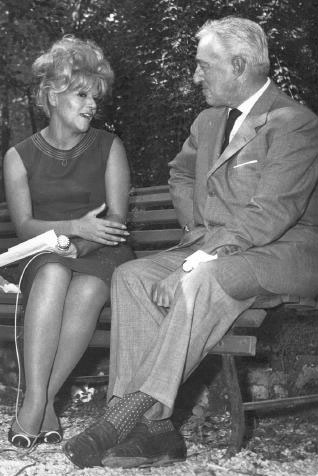 In the third episode they travel to Persia and he falls in love with it and with Shah Abbas and his court and the fact that Shah Abbas has maintained his independence from the Ottoman. Pietro really came to love Iran. No other travelers to Iran before or after him wrote so well about Iran. He spoke very, very well of Safavid Iran but he also put in little criticisms. At first I didn’t understand his strange criticisms but then I came to understand that it was because he was a fervent catholic. Otherwise he admired Iran very much. He traveled in Iran from 1621 to 1622 but did not publish his journals until 40 years later in 1670.
In the third episode they travel to Persia and he falls in love with it and with Shah Abbas and his court and the fact that Shah Abbas has maintained his independence from the Ottoman. Pietro really came to love Iran. No other travelers to Iran before or after him wrote so well about Iran. He spoke very, very well of Safavid Iran but he also put in little criticisms. At first I didn’t understand his strange criticisms but then I came to understand that it was because he was a fervent catholic. Otherwise he admired Iran very much. He traveled in Iran from 1621 to 1622 but did not publish his journals until 40 years later in 1670.
Parvin and Vittorio De Sica left
Shah Abbas was very polite to Europeans and to the Armenians at Jolfa and to his other Christian minorities. When the Shah drank his wine he would toast King Phillip II of Spain. The Shah’s mullahs from time to time were fanatical but this period was a real renaissance for Iran.
In my film I wanted to capture the essence of the era of Shah Abbas. To make a film capturing that idea could have cost millions and involved millions of extras like a Cecil B. Demille style production but I didn’t have that kind of budget. Instead the film became an art film which many critics found metaphysical and jewel like. In 1978 the film was presented at the Monte Carlo Film Festival.
The actor Richard Widmark was one of the judges. He congratulated me and commented favorably on my film. He particularly liked the mixture of Monteverdi and traditional Persian music in it. Although the film was mentioned by the reporter covering the festival for Time Magazine, in retrospect the Monte Carlo Film Festival was not the correct venue to debut this film. Even the judges were not right. I mean after all Widmark was a cowboy actor. It won a gold medal at the documentary festival in Nice that year as well.
The IRI didn’t like my film because it did nothing to enhance their politics. At the Key Club people sent me over champagne. They recognized my film. I had used some of my own funds to produce it. It was not a popular film. I have never tried to make a popular film. I have particular tastes that may not appeal to everyone. But I can tell you that whoever sees this film loves it. It has become a Classic.
I am a foreigner in Italy and also in Iran. I can tell you that Darius Mehrjui (“The Cow.”1970, “The Cycle,”1977 and “The Tennants,” 1982) likes my work and respects it. I was never part of a group. I always went solo.
When I was making: “Sarab-e-Soltanieh,” the revolution started and the NIRT which was helping to fund it went on strike. The IRI didn’t like my film. I told them it was about the mosque at Soltanieh but they weren’t impressed. In this film half the Iranians were Europeanized and Americanized and half were not. The male protagonist was an archeologist studying the unique blue ceramic tile at Soltanieh. He was played by Parviz Mirhosseini. In his role, he had a traditional conservative father and he had gone to school in a madresseh. His girlfriend, played by Shohreh Aghdashloo, was Europeanized and didn’t speak Persian very well.
I thought this film was appropriate for the time but the IRI put it in a box at NIRT and said they would call me and that was 24 years ago now. The film had three episodes and I made it with both my own money and funding from NIRT. I thought it was a very honest work.
Shohreh was perfect for the role. She is a real actress and works very hard. I came to feel a great affection for Shohreh and vice versa. When you put me in touch with her after 24 years it was like no time had passed at all. She is so unpretentious and simpatica. Also Gholam-Hossein Naghshineh was perfect in both my films: “Pietro Della Valle” and “Sarab-e-Soltanieh.” The Italian film editors were very impressed with the professionalism of Naghshineh. The filming of “Sarab-e-Soltanieh” was made so easy by the professionalism of the actors.
Q: What was the deal with that Yugoslav lead actor: Stanco Molnar? What was his recommendation?
A: I was attracted by his eyes but he was a pain in the ass. He was recommended to me by my friends the Taviani brothers. He had acted for Paolo and Vittorio Taviani in their film “Intolerance” about the American director Griffith. He also acted in Bertolucci’s: “1900” and in “Allons Enfants…” Stanco worked with Marcello Mastroiani but he did not have the warm personality of Marcello. I liked Stanco’s eyes.
You know I have many gay friends who are very simpatico and wonderful human beings but Stanco put on airs and had a difficult personality to work with. A great actor must be humble and helpful not difficult. He was a closet case gay and had a diva attitude. Remember how he fussed about not having a room in the Shah Abbas Hotel and moved in over there at his own expense? And I never got much help from the assistant directors either while making “Pietro…”
Regarding “Sarab-e-Soltanieh,” the cause should have been more important than luck. In ancient Persia, 500 years ago, they used to talk about “the auspicious time to do something, the right time to do something.” It was the wrong time to make this film. I finished it in August of 1978. With all the strikes going on, I saw it all happening but I had to bring this film to Iran to make it. There were huge strikes, nothing was happening at NIRT and then the Shah left and Khomeini arrived. The revolution made huge, huge changes to everything. The new directors, even the best are restricted by the IRI. Actresses have to wear head scarves.
But even during the Shah’s time there were some quite daring films that were made. I once asked Hatami, the director of “Silk Route” how he managed to get away with making that film. It took a lot of courage to make that film even coming at the end of the Shah’s era as it did.
There is no way today that I could remake “Sarab-e-Soltanieh” now with all the women in chadors. We are small in the face of huge historic events. Before the revolution much was wrong but there were a lot of good things too. Those who wanted a better Iran were marginalized by the IRI. The Mojahedin and the Fadaiyan were marginalized.
Q: What did you think of Sharpour Bakhtiar?
A: Sharpour Bakhtiar would have been perfect. Khomeini appealed to the illiterate masses. I interviewed Bakhtiar one time for the “Corriere della Sera” (largest circulation Italian daily.) Bakhtiar was educated in France. The population of Iran was not ready for Bakhtiar. The people had once loved the Shah but the Shah did not give parliament enough power.
The Imperial Court appointed parliament and the MP’s were mostly the nouveau riche. Bakhtiar believed in the constitution of Iran and in an elected parliament. Mossadegh believed in the constitution and the parliament as well. All the revolutions in Europe in the 1800’s were fought to gain parliamentary systems. The Shah understood this too but it was too late. He needed to start making Iran into a republic 4 or 5 years sooner.
I believe that the USA had only one motive. They were afraid of the USSR only. I do not believe in a big conspiracy theory. Usually motives are simple not complicated in history. Khomeini wanted to export his revolution to the Shias in Iraq. I believe Saddam attacked Iran for his own motives also and not just at the bidding of the USA. Khomeini wanted to conquer Jerusalem and Syria. If Gorbachev had arrived earlier there would have been a much softer transition in Iran.
Illiteracy almost no longer exists in Iran. There are many books being printed and translated in Iran. As long as the first page has a disclaimer against the Shah and his father then they can print anything they want without further censorship. People are very well read these days and a lot of books are being published now in Iran. The Shah had much more censorship of literature than now. It is a different type of censorship now of a religious nature like the restrictions on drinking, women’s dress and make up and so on.
Some great books have been written under the IRI regime about Shah Reza and Reza Shah. Some very good writers are still in Iran. The population has become much more educated. The population never dies. The Italians have never been as great as the Romans even though they had their Renaissance, O.K.! But Persians never die. Persians were always advisors to the Ottoman caliphs for example. Modern Greeks have never attained the greatness of the ancient Greeks like Aristotle, Socrates or Plato but Persians still have a great culture.
Q: What do you think about modern Iranian cinema?
A: Some beautiful films are also being made now in Iran. The whole world is calling Iranians terrorists thanks to America and yet they have been making films, some very artistic films in the middle of all this. Persians in the final analysis are poets not terrorists. I always thank Persian students and poets because they insist on existing in spite of all the politics.
“The Circle,” “Dayere” of Jafar-e-Panahi was very beautiful. It was not right for TV because it was full of “chiaro scuro.” It won the Golden Lion award at the Venice film festival. The movie starts out in a hospital with a baby being born and the whole family wanting a boy. When a girl is born they are all disappointed. You see I am telling you again that women are the last colony to be liberated.
Kiorastani has been very successful. In Italy he has much respect and is considered a great photographer and referred to as Maestro. Also Makhmalbaf and his film “Kandahar” has earned a lot of recognition internationally. I am very impressed by the courage of Kiorastani and his films.
Q: Besides Kiarostani and Makhmalbaf are their any other modern Iranian directors that you admire?
A: Well those are the two I am most familiar with. I liked Abbas Kiarostani’s “Taste of Cherry” about ordinary events in life and emotions versus 20th century events beyond our control. His films are always successful despite the climate of fear of censorship in the IRI and I admire his courage greatly. “The Circle” was much more cinematographic but I did not find it profound three days later….
A lot of the interest in Iranian film is due to the curiosity in the West about life in the IRI. However I must add that there were also some great directors at the time of the Shah like Kimiavi. He was an admirer of Jean Luc Goddard. Kimiavi made some very beautiful films in those days. In fact, despite his shortcomings, the Shah actually did much for Iran and the Iranian cinema industry with classes offered in cinematography at the universities and by supporting NIRT. The great directors of Iran learned their craft under the Shah’s regime not the Mullahs even though they try to claim credit for them.
By Brian Appleton
The interview with Parvin Ansary continues here…
